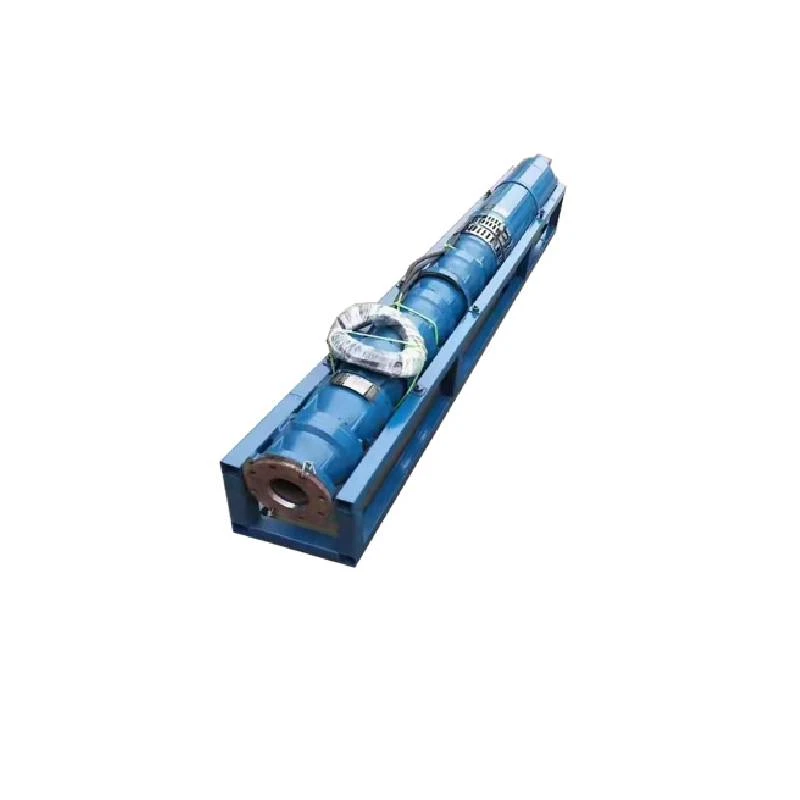Nov . 09, 2024 19:34 Back to list
Innovative Solutions for Efficient Submersible Slurry Pumping and Waste Management Systems
The Role and Importance of Submersible Slurry Pumps in Various Industries
Submersible slurry pumps are specialized hydraulic machines designed to handle slurries—mixtures of liquids and solid particles. These pumps are submerged directly in the fluid to be pumped, allowing for exceptional efficiency and effectiveness in moving difficult materials. The unique design of submersible slurry pumps makes them indispensable in various industries including mining, construction, and wastewater management.
Design and Functionality
Submersible slurry pumps are constructed to endure challenging environments. They feature a robust and durable design, often made from materials like cast iron or stainless steel that resist corrosion and wear. The impeller is usually constructed with a semi-open or closed design which allows it to handle solids of varying sizes while maintaining performance.
One of the primary advantages of submersible slurry pumps is their ability to operate at significant depths. Because they are submerged in the liquid, they eliminate issues related to cavitation, which is a common concern for surface pumps. This maximizes operational efficiency, decreases maintenance needs, and enhances longevity. Furthermore, submersible pumps often come equipped with a cutting mechanism, enabling them to handle tougher solids and fibrous materials without causing blockages.
Applications in Various Industries
1. Mining and Quarrying In the mining sector, submersible slurry pumps are vital for dewatering operations. They remove excess water from mines to ensure a safe working environment and maintain productivity. The ability to pump heavy slurries, such as those containing sand, gravel, or ore, makes these pumps crucial for effective material handling.
2. Construction The construction industry relies heavily on submersible slurry pumps during excavation and foundation work. These pumps are employed to manage water and slurry produced during digging processes. They help contractors maintain a dry site, enabling timely and efficient project completion.
submersible slurry pumps

3. Wastewater Treatment Submersible slurry pumps are also instrumental in wastewater management. They aid in transporting sludge and other solid waste materials from treatment plants to disposal areas. This application is vital for maintaining sanitary conditions and preventing environmental pollution.
4. Agriculture and Land Reclamation In agriculture, these pumps are used for land reclamation projects and irrigation setups. They can efficiently manage slurry applications and help in the distribution of liquid fertilizers, supporting sustainable farming practices.
Advantages of Submersible Slurry Pumps
The benefits of employing submersible slurry pumps are manifold. One of the major advantages is their ability to operate in confined spaces due to their compact design, which allows them to be deployed in areas where traditional pumps may not be feasible. Additionally, their submerged operation significantly reduces the noise level typically associated with pumping processes, promoting a quieter work environment.
Energy efficiency is another key attribute. Many modern submersible slurry pumps are designed to optimize energy consumption while providing maximum output. With advancements in technology, these pumps now often feature variable frequency drives (VFDs) that adjust the pump speed according to the demand, resulting in reduced energy costs.
Conclusion
In summary, submersible slurry pumps hold a critical position across various industries due to their unique design and functionality. Their ability to handle tough materials, operate efficiently in challenging environments, and improve energy usage make them invaluable in mining, construction, wastewater treatment, and agriculture. As industries continue to evolve and face new challenges, the importance of reliable and efficient pumping solutions like submersible slurry pumps will undoubtedly grow, driving innovation and performance across sectors.
-
Submersible Water Pump: The Efficient 'Power Pioneer' of the Underwater World
NewsJul.01,2025
-
Submersible Pond Pump: The Hidden Guardian of Water Landscape Ecology
NewsJul.01,2025
-
Stainless Well Pump: A Reliable and Durable Pumping Main Force
NewsJul.01,2025
-
Stainless Steel Submersible Pump: An Efficient and Versatile Tool for Underwater Operations
NewsJul.01,2025
-
Deep Well Submersible Pump: An Efficient 'Sucker' of Groundwater Sources
NewsJul.01,2025
-
Deep Water Well Pump: An Efficient 'Sucker' of Groundwater Sources
NewsJul.01,2025
-
 Submersible Water Pump: The Efficient 'Power Pioneer' of the Underwater WorldIn the field of hydraulic equipment, the Submersible Water Pump has become the core equipment for underwater operations and water resource transportation due to its unique design and excellent performance.Detail
Submersible Water Pump: The Efficient 'Power Pioneer' of the Underwater WorldIn the field of hydraulic equipment, the Submersible Water Pump has become the core equipment for underwater operations and water resource transportation due to its unique design and excellent performance.Detail -
 Submersible Pond Pump: The Hidden Guardian of Water Landscape EcologyIn courtyard landscapes, ecological ponds, and even small-scale water conservancy projects, there is a silent yet indispensable equipment - the Submersible Pond Pump.Detail
Submersible Pond Pump: The Hidden Guardian of Water Landscape EcologyIn courtyard landscapes, ecological ponds, and even small-scale water conservancy projects, there is a silent yet indispensable equipment - the Submersible Pond Pump.Detail -
 Stainless Well Pump: A Reliable and Durable Pumping Main ForceIn the field of water resource transportation, Stainless Well Pump has become the core equipment for various pumping scenarios with its excellent performance and reliable quality.Detail
Stainless Well Pump: A Reliable and Durable Pumping Main ForceIn the field of water resource transportation, Stainless Well Pump has become the core equipment for various pumping scenarios with its excellent performance and reliable quality.Detail
